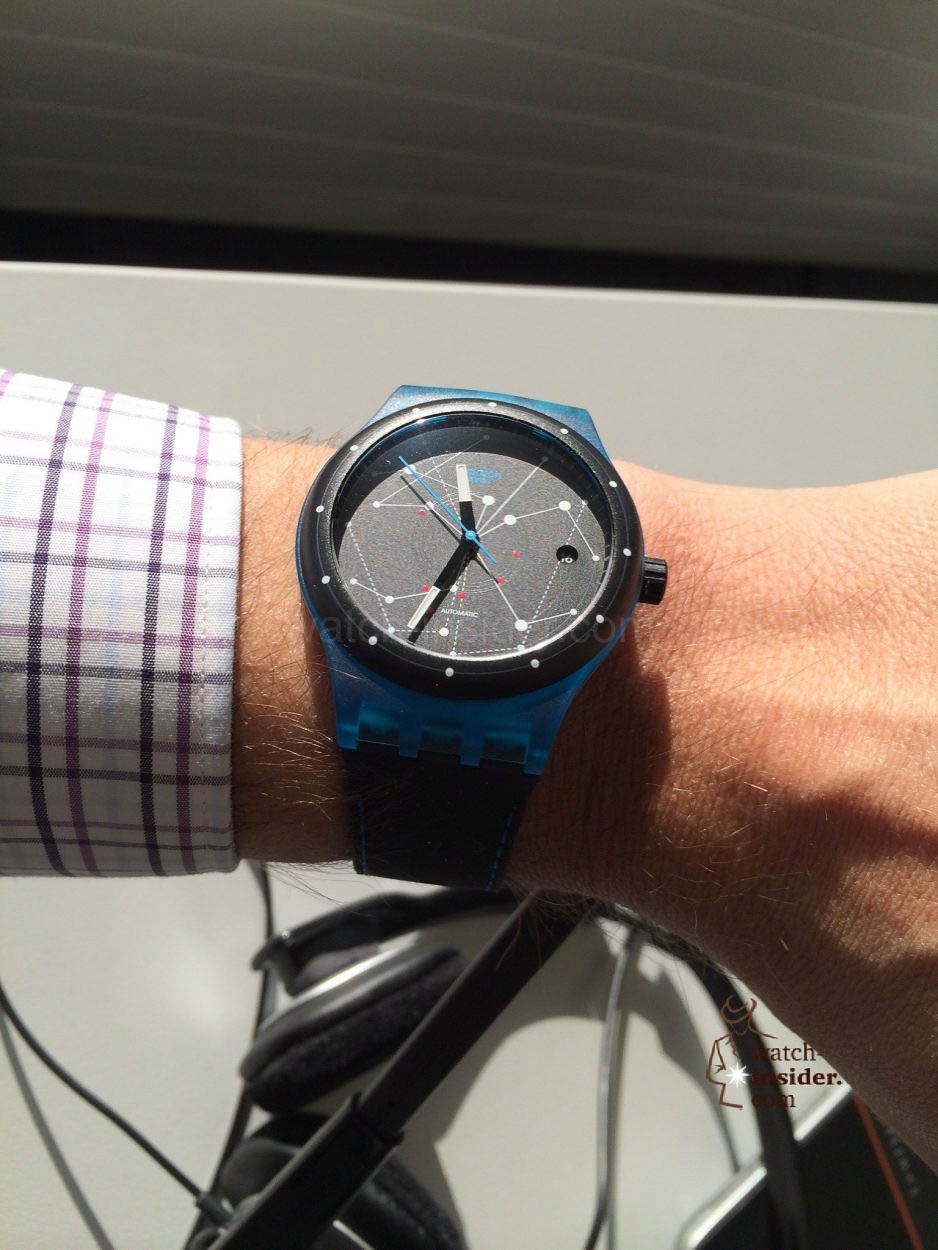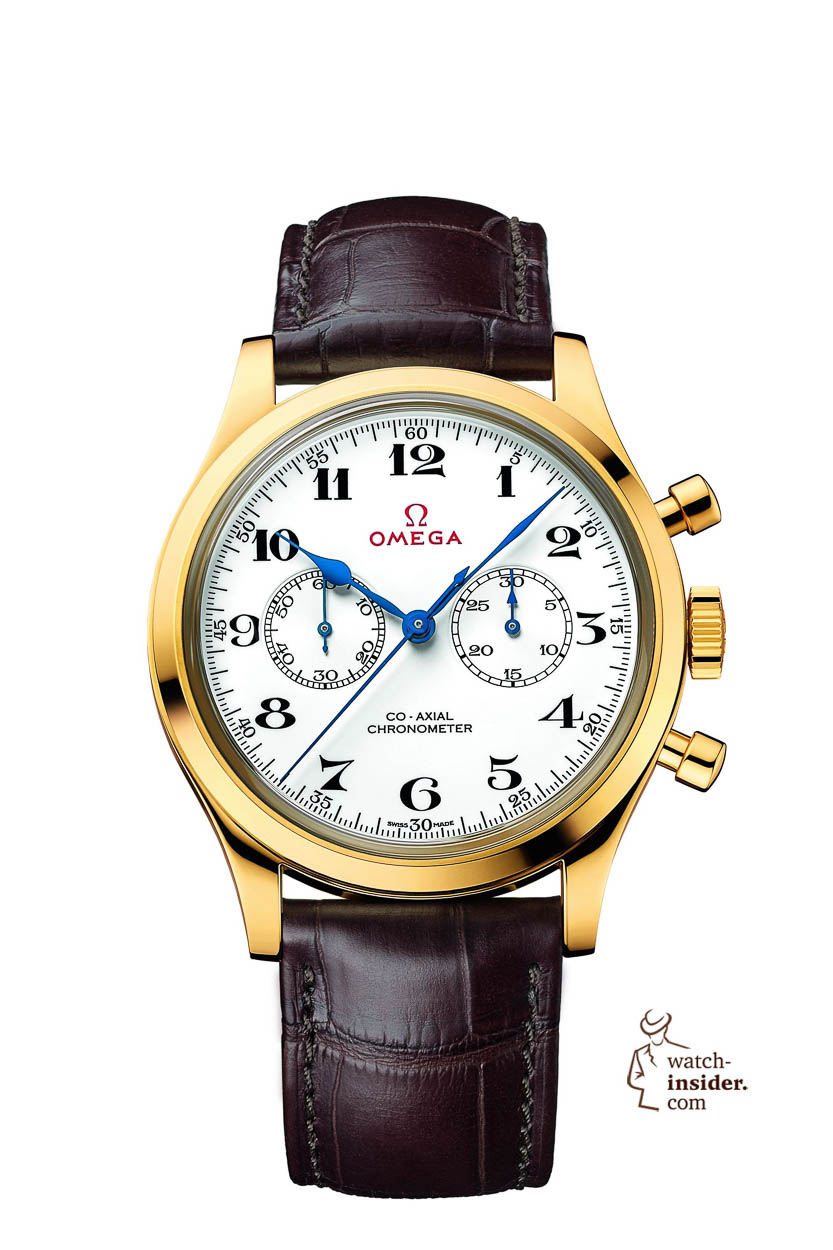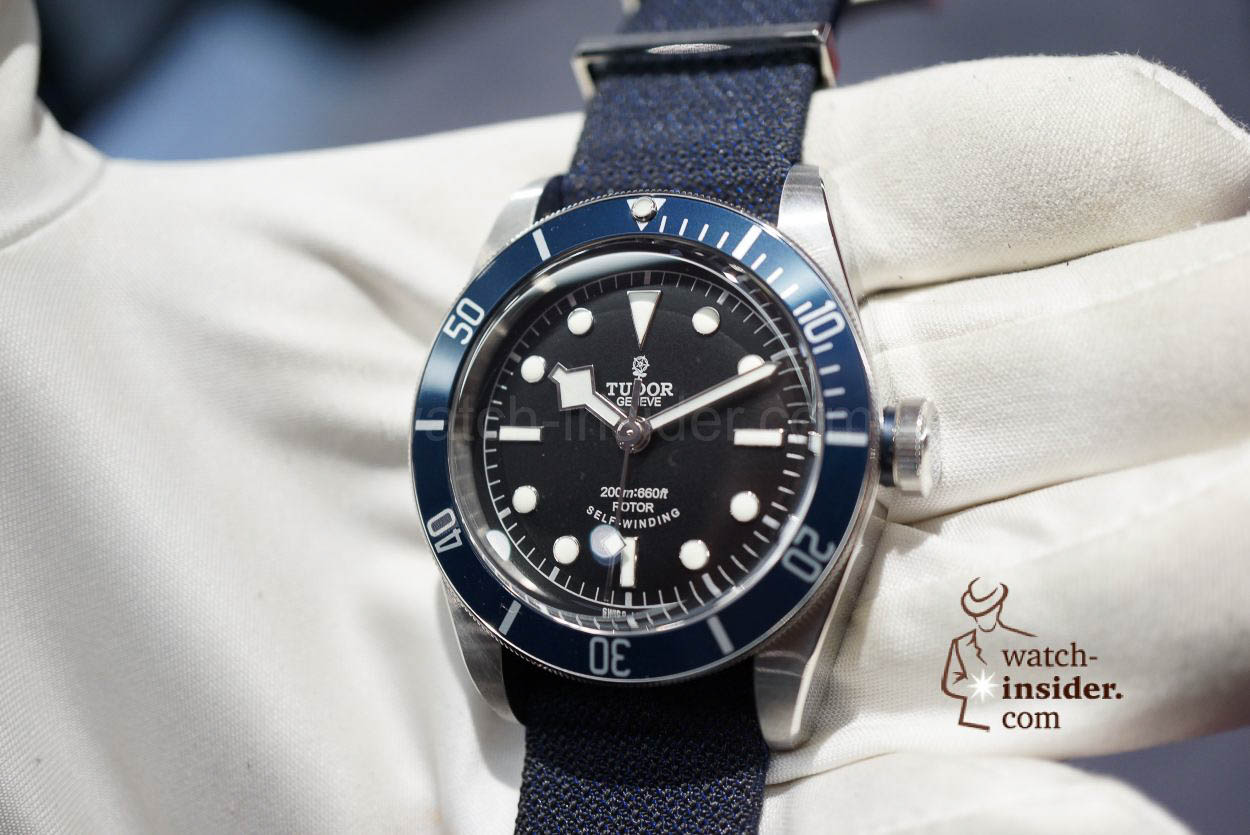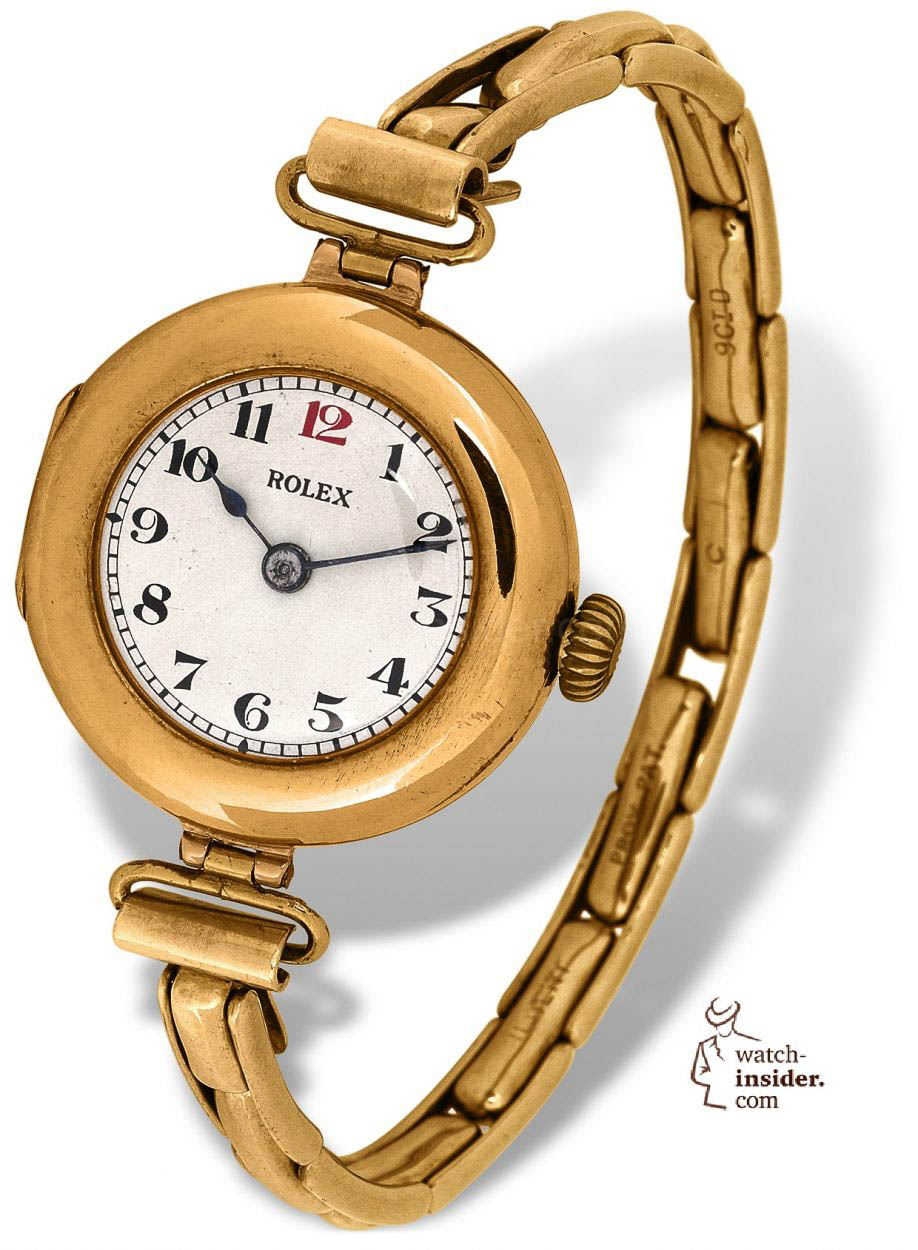These statistics show you the numbers of movements per company sent to the Contrôle Officiel Suisse des Chronomètres. Have a look and please read why I believe only an Officially Certified Super-Chronometer could save the COSC.
Many of you might know what the Contrôle Officiel Suisse des Chronomètres (COSC) is doing, but for those who don´t know let me explain in a few words.
The COSC is testing and certifying mechanical and quartz movements. So what we learn first is, that the manufacturer is not sending the entire watch to COSC to be tested, but just the movement with standardized white dial. The movements are tested at the various offices of COSC in Switzerland and not by the manufacturer himself.
Well, this is interesting! When you visit the official COSC website this question is asked:
… ”What exactly is a chronometer?” …
Let me quote the answer:
… “The term chronometer is often wrongly applied to timekeeping instruments fitted with an additional mechanism that may be set in motion by pushbuttons to enable measurement of the duration of an event. Such an instrument is in fact a chronograph or chronoscope. It may of course be chronometer-certified, provided it meets the criteria set for the standard. In its technical regulations, the COSC has included an additional condition, namely the permanent display of the seconds.” …
Guys, is this really something you did not know? Did you mistake a chronograph for a chronometer? Now let me quote the COSC website for the exact definition of a chronometer:
… “A chronometer is a high-precision watch capable of displaying the seconds and housing a movement that has been tested over several days, in different positions and at different temperatures, by an official neutral body (COSC).
Each chronometer is unique, identified by a number engraved on its movement and a certification number given by the COSC. Each movement is individually tested for several consecutive days, in 5 positions and at 3 temperatures. Each movement is individually measured. Any watch with the denomination “chronometer” is provided with a certified movement.” …
Ok, I now hope you learned something 🙂
Since every thing dealing with COSC is very official I don´t want interpret any of the official information and I allow myself again to quote from the official COSC website. This is what we read about the testing procedure:
… “ISO 3159 provides the definition of a wrist-chronometer with spring balance oscillator. Only movements which meet the precision criteria established under ISO 3159 are granted an official chronometer certificate. Movements are tested for 16 consecutive days according to a tests panel.
• Every day, including Saturdays and Sundays, movements are measured and rewound.
• Based on these measurements, 7 eliminatory criteria are calculated.
• If and only if all these criteria are met, the movement is duly “chronometer-certified”.” …

Different criteria apply depending on the size of the movement…

But not only mechanical movements are tested from COSC. Companies like Breitling send all their movements to COSC, including the quartz ones. This is what happens with quartz movements. I again quote the official COSC web site.
… “No international standard has so far been issued regarding electronic quartz watches. Based on ISO 3159, the COSC has drawn up a set of testing prescriptions applicable to quartz chronometers which govern their performances in the same way as for mechanical chronometers. Taking account of the specific technological characteristics of these products, the COSC has adapted the tests and precision requirements. This called for the development of special quartz movements in order to meet these new requirements. It has become compulsory for them to be equipped with an electronic system compensating for the variation in the frequency of the quartz according to changes in temperature. A new-generation quartz chronometer is therefore 10 times more accurate than a conventional quartz watch. Moreover it is a very exclusive product manufactured on a low scale. Each quartz chronometer is tested for 11 days, in one position and at 3 temperatures, as shown in the table on the next page. In addition, throughout an entire day, it is subjected to 3-dimensional rotations causing it to repeatedly assume all spatial positions. Finally, it is subjected to 200 shocks equivalent to 100 G (100 times stronger than gravity). Based on these measurements, 8 eliminatory criteria are calculated. If and only if these 8 criteria are met, the movement is duly “chronometer-certified”.” …

Once again I quoted the official COSC website. Nothing until now was interpreted, I just quoted, interesting, isn´t it?
Now let me ad some personal comments:
I personally think what COSC does today is a bit old fashioned. The criteria for mechanical movements should be revised!!
I would ad more temperature changes and also some tough temperature shocks.
Tests should be done under changing conditions such as impulsive shocks and on-going jerky movements and the influence of magnetic fields on the movements should be tested.
All these criteria could lead to a Super COSC or something similar. The companies wanting their movements be an Officially Certified Super-Chronometer could go for the extended testing, the others could just do the simple one and the be an Officially Certified Chronometer.
And, finally there is one question that is eminent: Why not testing the entire watch as the German Wristwatch Chronometer standard DIN 8319 demands?
And last but not least let us have a look at the official COSC figures 2012/2013 and January 2014.
To enlarge the statistics please click on them …



The first thing that has to be mentioned here is, that these are only the movements sent to COSC and NOT the entire watches sold by the companies mentioned. Some companies do NOT send all their movements to COSC and NOT all movements sent to COSC necessarily need to be sold in a watch later. They might, but they must not.
Honestly I do doubt the figures of Rolex. The numbers of movements certified by COSC do NOT reflect the number of watches sold. All my reliable industry sources tell me that Rolex actually is selling around 600.000 watches per year. So now we can speculate were the difference comes from. What I often hear is that Rolex is sending some movements twice to COSC and also sends the movements repaired by the after sales department again to COSC. No one would doubt that it is in the interest of Rolex to always remain the number one on the yearly COSC ranking and to steadily show some growth.
More reliable to me are the figures from all the other manufacturers. Omega for instance suffered because ETA did not deliver all the movements ordered and due to the beginning of the manufacturing of the new exclusive, non-magnetic movements at ETA for Omega. So essential manipulations in the production chains were necessary…
Also Breitling suffered and did not get as many ETA movements as desired. Give Breitling another few years time to ramp up its own movement production and you will see much more growth there also.
Interesting are the figures of Mido and Tissot. We will have to monitor the figures of Tissot very closely. I have heard rumours that Tissot could step by step send more and more movements to COSC and finally attempt to throw King Rolex from the throne.
This is possible!
ETA meanwhile produces movements for Tissot in a quality that the existing COSC criteria can easily be achieved. It´s just a question if the Swatch Group management will decide to send more and more Tissot-ETA-movements to COSC.
Concerning the figures of Chopard and Panerai there is not much to comment. They remain at a constant level and they only reflect a small percentage of the entire production of the two manufacturers.
If you ask yourself why any other companies are mentioned, here is the answer: The amount of watches sent to COSC by them is just to small …
Let´s resume:
In my eyes COSC for mechanical movements should be developed to the next level. A Super-COSC (= Officially Certified Super-Chronometer) should be introduced. The existing COSC does no longer reflect the real potential of high-end movements. You can pass the COSC testing with quite inexpensive calibres today. Even the Swatch Sistem51 could pass COSC! If the official COSC authorities and the companies financing the testing do not adapt COSC to the today’s reality I could imagine that some companies begin to develop their own testing criteria that then would be guaranteed by an independent testing institute in Switzerland.
Let us together take a look into the famous crystal ball:
Omega has developed its movements to become step by step totally non-magnetic. At Baselworld we will see four Omega-movements being totally non-magnetic, resulting in a total of 69 references. And this is just the beginning! Omega until 2015/2016 will only produce non-magnetic movements. This generation of calibres has nothing to do with what we have seen until present. So why should Omega not want to apply a kind of Super-COSC or a new testing procedure to distinguish its calibres from others?
>>> Please let me know if this article was interesting for and PLEASE let me know what you think about COSC and its future <<<






Don’t we already have a “super-COSC” in the Concours International de Chronométrie?
http://www.concourschronometrie.org/f/home
http://www.ft.com/intl/cms/s/0/d2c929b0-2769-11e3-8feb-00144feab7de.html#axzz31YYBaj6y
(and my favorite)
http://www.youtube.com/watch?v=yBH4TCZ4fbU
In their own tests, what exactly do JLC measure out of interest?
hi Alexander, i love your idea so much(super-cosc), this idea can make the actual watches more close to reality, not just the movement.
but in this traditional industry. people will only say you are madness. but this idea really can improve the industry standard and it is good for the customers.
Alexander, as always an interesting and informative write-up. I personally think that your take on a new, more technologically up-to-date certification would make sense. Almost any solid mechanical movement today can be fine-tuned to meet the present COSC standards. With the innovations in modern material like Silicium, I feel that the watch-buying public would embrace a higher level of certification that includes not only accuracy, but durability too.
Very good feedback & input! Thank you!
Dear Alexander. Many thanks for this very informative article. I agree that adding criteria for resistance of the entire watch would be important to inform the consumers. But only if and when you want to forget that Swatch probably could dump 1 million 51 watches at a sales price of lets say 200 sfr into a super COSC (antimagnetic, watertight, G-resistance) to get Rolex down from No 1. Well, as they want to sell their Omegas and Tissots at higher prices they wouldn’t do it and Tissot will have this role.
I am wondering how COSC is testing the watches practically, how big are their laboratories, how do they wind so many watches etc. Did you ever have the chance to visit their labs? That would be an interesting article indeed.
No, until today I did not get the chance to visit the COSC labs… If I only could I would…
Interesting article. I have 6 Rolexes, 3 Omega,2 Breitling, one Panerai and many other watches from other brands including top brands.. My most precise watch is F.P. Journe Chronometre Souverain ( they dont need to go to COSC!) followed by my Cartier Tank Americaine with an….ETA Mouvement. Frankly the Rolexes, Omegas, Bretling and Panerai tested by the COSC are very good in general. My question is more for some very expensive brands doing very complicated watches and also produce simpler one which could not in some case be certified by ….COSC not to mention Super-COSC.
Really interesting article. A thought occurred to me, do COSC publish how many movements they reject per year?
Would be interesting to know and by brand!
Would be great, but no way to get this information, also the figures here are not published officially … But, as you see, I have my sources 🙂
Alexander, you can also look at it from another perspective – that technology advanced so much, it is really not that difficult anymore for movements from top manufacturers to meet and exceed standards set by COSC. In this way you can see it not as a top, absolute benchmark, but as a standard, a minimum everyone has to adhere to.
I know super-COSC would make sense, but is it really that important to shave off -/+1 seconds? Of course the option should be given to those interested, but I would hope they might spend time and research money developing new complications, not just on squeezing as much as they can from an existing movement.
A Super-COSC should not only be a proof for more accuracy in terms of seconds per day, but a proof that the movement/entire watch is able to resist to thermal and mechanical shocks and to magnetic fields. A better all over proven performance of such a watch should be the goal…
excellent article as usual! …I agree a super cosc involving shock, magnetism, temp, and G forces could be in order taking into account the new technologies that watches like Omega, Ball etc have
Paco, thanks for the feedback!
I have a 35 dollar vostok komandirskie that runs as well as both my Rolexes and sometimes better….cosc should be revised….great article…. by the way those little russians have been to space regularly…
Now that is great journalism! Thanks Alex for this interesting and insightful analysis!
Thank you for your efforts to ‘educate’ us! I enjoyed your piece about the need foe a ‘Super’ COSC test procedure for the many new designs embodying new materials and more complex modern movements. the newer technology demands a higher standard of proofing. As with other fine engineering products new engineering ‘standards’ are being set/reset.
Incidentally and knowing that English is not your ‘mother’ tongue’ the correct term for the movements that Omega are working on is “non-magnetic”
That Is containing no magnetic metals usually non-ferrous and containing no Iron in any alloys used. Kinds regards to your team, Stephen H.
Stephen, thank you for your ongoing interest and thank for your comment! I just made some corrections…
Super-COSC seems to be a good idea with even more stringent testing, apart from that, I think, the complete watch should be tested instead of just the movement.
Yes, the entire watch should be tested!
This is an interesting post, Alexander. The figures are a surprise to me. For example I did not know that Panerai offers COSC-certified movements.
I do not own or ever have owned a watch with chronometer certified movement. When I worried about the precision of mechanical watches the brand that I preferred at that time let me know, that their internal standards are clearly above those of COSC. Well, I learned that not a single one of this brand’s watches was regulated well enough to fulfill these standards when being sold.
So, in fact a COSC certification to me is a nice feature of an actually not that superior watch. I was impressed when the Swatch Sistem 51 initially was planned to be delivered with COSC certification. The last (and first?) COSC-certified watch that captured my interest was the Tissot Powermatic 80 Chronometer for around 800 Euros.
I do not really think that a super COSC certification would sell a watch much better. A lot of rather expensive watches are sold on which it is hardly possible to read the time at all. Many tourbillon watches are offered while there is no indication that these are running more exact than watches without a tourbillon.
So, to me precision is a characteristic that is expected of a precious watch but that is not missed if it is not present. So why invest in a certification?
A rigid Super-COSC testing procedure would change everything. It would be the ultimate proof for quality and not only marketing
Couldn’t agree with you more regarding a Super-COSC category!! We in the watch loving public are ready for it, and watch manufacturers should revel in it.
The COSC standards have been around since 1973, and watch movements have progressed very much since then. It is time for updated testing.
There are companies that do not send their watches to be certified by COSC because they have more demanding tests. It’s astounding that COSC would not rise to a level where their testing would be the absolute benchmark for the highest quality as its certification is meant to imply. Obviously they’re self-satisfied wearing $8000 suits and eating well. Sooner rather than later they’re setting themselves up for a rude awakening. In this info age where nothing is sacred they put themselves on the chopping block. I applaud you for your comments regarding Rolex et al. This is an industry you obviously love working with and taking on its 800 lb. gorilla takes a bit of courage. Kudos.